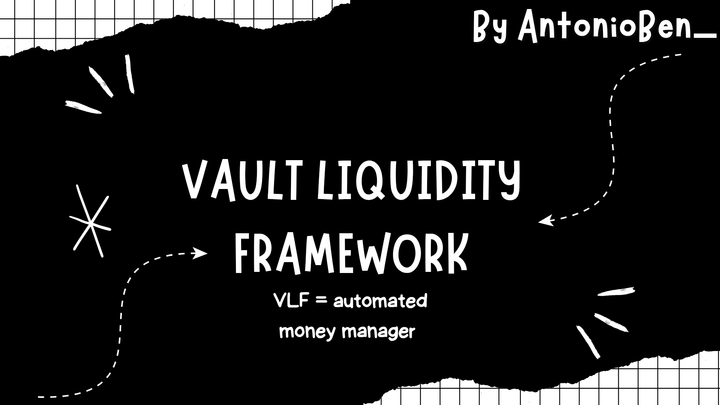Matrix Vaults: A Deep Dive into Mitosis Liquidity Powerhouse

Decentralized finance (DeFi) thrives on liquidity, but fragmentation across blockchains often traps capital in isolated silos, limiting efficiency and opportunity. Mitosis, a Layer 1 blockchain focused on Ecosystem-Owned Liquidity (EOL), seeks to break these barriers with its innovative Matrix Vaults. These vaults are not just storage for assets; they are dynamic tools that empower users to optimize yields, retain control, and engage in cross-chain DeFi strategies. By enabling users to deposit assets and mint maAssets (programmable, yield-bearing tokens), Matrix Vaults redefine how liquidity providers (LPs) interact with DeFi ecosystems.
This article explores the mechanics of Matrix Vaults, emphasizing how they place users at the heart of liquidity management, offering flexibility, transparency, and high-yield potential.
Mechanics of Matrix Vaults: Depositing and Earning
Matrix Vaults are Mitosis's flagship offering, designed to curate premium DeFi opportunities while ensuring users maintain autonomy over their capital. The process begins with depositing assets, transforming static holdings into dynamic tools for yield generation. Here’s how it works and why it empowers users.
When a user deposits assets such as ETH, stablecoins, or Liquid Restaking Tokens (LRTs) like weETH into a Matrix Vault, the vault mints maAssets at 1:1. For example, depositing 10 ETH creates 10 maETH, representing the user’s stake in the vault. Unlike traditional liquidity pools that lock funds with rigid terms, Matrix Vaults prioritize flexibility. Users can choose campaigns with defined lock-up periods, but they’re not trapped (meaning early withdrawals are possible), though they forfeit a portion of accrued rewards, which are redistributed to loyal participants. This incentivizes commitment while respecting user choice.
The maAssets are yield-bearing tokens that accrue value over time, drawn from protocol fees, lending interest, or trading revenue across integrated DeFi platforms like Aave or Uniswap. What sets Matrix Vaults apart is their programmability. maAssets aren’t just receipts; they’re composable, meaning users can deploy them in other DeFi strategies such as lending, staking, or collateralizing, without exiting their vault position. This transforms liquidity from a passive holding into an active financial instrument, empowering users to maximize returns while staying liquid.
The user empowerment angle shines through in the transparency of terms. Before depositing, users see clear details on campaign duration, expected yields, and risks. This clarity eliminates the guesswork common in DeFi, where opaque reward structures often frustrate LPs. By curating high-yield opportunities across chains like Ethereum, Arbitrum, and Solana, Matrix Vaults let users tap into diverse markets without needing to navigate each blockchain manually. It’s a streamlined approach that puts control in the user’s hands, balancing accessibility with sophistication.
Cross-Chain Liquidity and Auto-Rebalancing
Matrix Vaults excel in breaking down blockchain silos, enabling seamless cross-chain liquidity deployment. This capability is central to user empowerment, as it frees LPs from the complexity of manual bridging and chain-specific strategies.
When assets are deposited, Matrix Vaults leverage Mitosis’ cross-chain messaging system, powered by partners like Hyperlane, to allocate liquidity dynamically.
For instance, a user depositing ETH on Ethereum might see their maETH deployed to a lending protocol on Solana or a staking pool on Arbitrum, depending on where yields are highest. This isn’t a black-box process as users can track their maAssets’ allocations through Mitosis’ dashboard, ensuring transparency. The vault’s auto-rebalancing feature further optimizes returns by shifting assets to protocols offering better opportunities as market conditions change. If a lending protocol’s APY spikes, maAssets are redirected to capitalize on it, all without user intervention.
This cross-chain flexibility empowers users by abstracting away technical hurdles. Instead of juggling wallets across multiple networks, LPs deposit once and let Matrix Vaults handle the rest. The maAssets remain usable across Mitosis’ ecosystem, so users can collateralize them for loans or stake them in governance without sacrificing yield. This composability means liquidity isn’t locked in one chain’s ecosystem as it flows where it’s most effective, amplifying capital efficiency.
The empowerment extends to risk management. Matrix Vaults integrate with trusted protocols, vetted for security, and employ strategies like diversified allocation to mitigate exposure. Users aren’t forced to bet on a single chain or protocol; their liquidity is spread across high-impact opportunities, reducing volatility’s sting. For retail LPs overwhelmed by DeFi’s complexity, this curated approach feels like having an expert guide, yet they retain the freedom to withdraw or redirect their maAssets anytime, balancing automation with autonomy.
Governance and Reward Redistribution
Matrix Vaults aren’t just about earning yields, they’re about giving users a voice in how liquidity shapes DeFi ecosystems. This governance aspect, paired with a unique reward redistribution system, underscores Mitosis’s commitment to user-centric design. When users hold maAssets, they gain access to Matrix’s governance framework, where they can vote on campaign terms, protocol integrations, or liquidity allocation strategies.
Unlike many DAOs where voting power concentrates among whales, Matrix Vaults scale influence proportionally to maAsset holdings, ensuring even smaller LPs have a say. This democratizes decision-making, empowering users to steer the ecosystem toward opportunities that align with their goals—whether prioritizing stablecoin yields or high-risk, high-reward campaigns.
The reward redistribution mechanism further aligns incentives. If a user withdraws early from a campaign, say, after 30 days of a 90-day lock-up, they forfeit a portion of their rewards, typically 50%. These forfeited rewards don’t vanish; they’re redistributed to LPs who stay committed, boosting their returns. This system discourages mercenary capital (i.e., LPs who jump ship when incentives dip) while rewarding loyalty. For example, if an early exit sacrifices 0.5 ETH in rewards, that amount is proportionally shared among remaining participants, enhancing their APY. This creates a virtuous cycle where long-term engagement directly translates to higher gains.
Governance and redistribution empower users by aligning their interests with the ecosystem’s health. LPs aren’t just passive yield farmers; they’re stakeholders shaping a sustainable DeFi landscape. The ability to vote on curated campaigns means users influence which protocols receive liquidity, fostering partnerships that benefit the collective. Meanwhile, the redistribution model ensures that loyalty isn’t just a buzzword but a tangible advantage. For retail investors, this dual role as earner and decision-maker feels like a seat at the table, making Matrix Vaults a powerful tool for financial agency.
Conclusion
Matrix Vaults stand out as a cornerstone of Mitosis’ vision to unify DeFi liquidity. By enabling users to deposit assets and mint maAssets, they transform static capital into dynamic, programmable tokens that unlock cross-chain opportunities. The mechanics are straightforward yet profound: deposit assets, receive maAssets, and earn yields from curated strategies, all while retaining the flexibility to withdraw or redeploy capital. This balance of simplicity and power ensures users don’t need to be DeFi experts to benefit, yet sophisticated LPs can leverage maAssets for complex strategies. The transparency of terms and focus on user control make Matrix Vaults a refreshing departure from the often opaque world of liquidity provision.
The cross-chain capabilities of Matrix Vaults are a game-changer, empowering users to tap into yields across blockchains without wrestling with technical barriers. Auto-rebalancing and composable maAssets mean liquidity works harder, flowing to high-yield protocols while remaining accessible for other DeFi activities. This fluidity reduces the friction of multi-chain investing, letting users focus on strategy rather than logistics. For retail LPs, it’s like having a passport to DeFi’s global markets, with Mitosis handling the visas.
Governance and reward redistribution cement Matrix Vaults as a user-driven platform. Voting rights give LPs a stake in the ecosystem’s direction, while redistributed rewards incentivize loyalty over short-term gain. This creates a community where users aren’t just participants but architects, shaping a resilient DeFi future. It’s a model that rewards patience and engagement, ensuring that those who stay invested see outsized benefits.
What does true financial empowerment in DeFi look like to you? Matrix Vaults offer one compelling answer, blending yield generation with autonomy and influence. As Mitosis continues to evolve, its vaults are poised to redefine how we think about liquidity, not as a resource to lock away, but as a tool to wield with purpose.



Comments ()